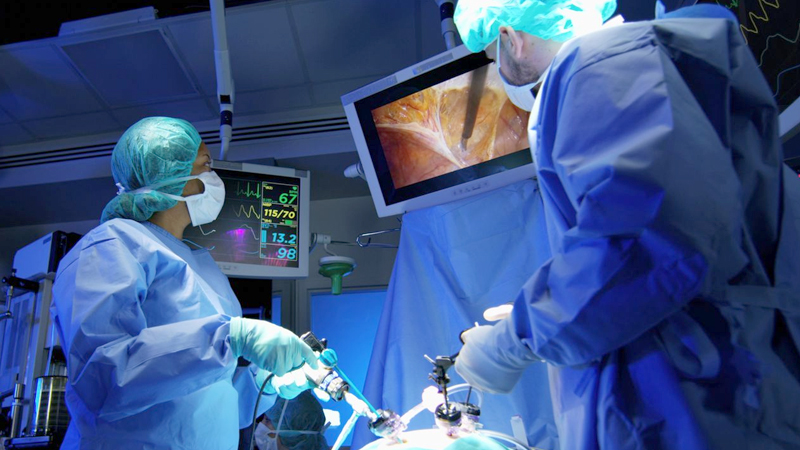
TLH (Uterus Removal)
A Total Laparoscopic Hysterectomy (TLH) is a surgical procedure where the uterus is removed using minimally invasive techniques. This surgery can be performed for various medical reasons, such as:
- Fibroids: Non-cancerous growths in the uterus that can cause pain, heavy bleeding, or other symptoms.
- Endometriosis: A condition where the tissue that normally lines the inside of the uterus grows outside it, causing pain and potentially affecting fertility.
- Pelvic inflammatory disease: An infection of the female reproductive organs that can cause chronic pain.
- Uterine prolapse: A condition where the uterus descends into the vaginal canal due to weakened pelvic muscles.
- Cancer: In cases of uterine, cervical, or ovarian cancer.
Procedure
The TLH procedure involves several key steps:
- Anesthesia: The patient is given general anesthesia to ensure they are asleep and pain-free during the procedure.
- Small Incisions: Small incisions are made in the abdomen, usually around the navel and lower abdomen.
- Laparoscope Insertion: A laparoscope, which is a thin tube with a camera, is inserted through one of the incisions. This allows the surgeon to see the pelvic organs on a video screen.
- Surgical Instruments: Other surgical instruments are inserted through the additional incisions to perform the surgery.
- Uterus Removal: The uterus is detached from the surrounding tissues and blood vessels. It is then removed through one of the small incisions or, in some cases, through the vagina.
- Closure: The incisions are closed with sutures or surgical tape.
Recovery
- Hospital Stay: Typically, patients may stay in the hospital for a day or two, depending on their recovery.
- Postoperative Care: Pain management, prevention of infection, and monitoring for any complications are essential parts of postoperative care.
- Activity: Patients are usually advised to avoid strenuous activities and heavy lifting for several weeks.
- Follow-up: Regular follow-up appointments are necessary to ensure proper healing.
Benefits of TLH
- Minimally Invasive: Smaller incisions lead to less pain, minimal scarring, and faster recovery compared to open surgery.
- Reduced Hospital Stay: Most patients can go home sooner than with traditional surgery.
- Quicker Return to Normal Activities: Recovery time is generally shorter, allowing patients to resume normal activities more quickly.
Risks and Complications
- Bleeding: There may be some blood loss during surgery.
- Infection: As with any surgery, there is a risk of infection.
- Damage to Surrounding Organs: There is a small risk of injury to surrounding organs such as the bladder or intestines.
- Anesthesia Risks: General anesthesia carries its own risks, including reactions to medications.
Alternatives
- Medication: Hormonal treatments can sometimes manage conditions like fibroids or endometriosis.
- Non-Surgical Procedures: Techniques like uterine artery embolization can shrink fibroids.
- Other Surgical Options: Depending on the condition, alternatives like myomectomy (removal of fibroids) or partial hysterectomy (removal of the uterus while preserving the cervix) may be considered.
Patients should discuss their specific situation, including the risks and benefits, with their healthcare provider to determine the best treatment plan.
